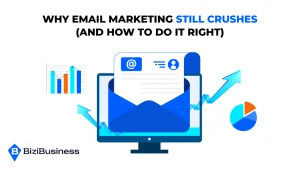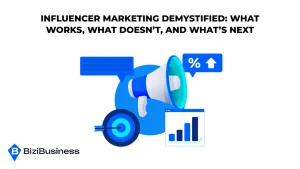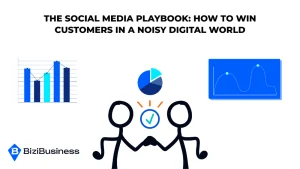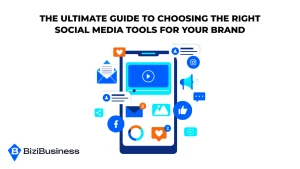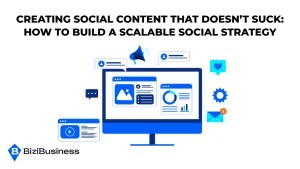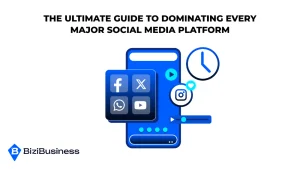BiziTopics
Why Your Content Isn’t Getting Engagement—And How to Fix It Fast
BiziBusiness
Aug 12, 2025
10 min read
Let’s start with a hard truth: just because you’re posting, doesn’t mean you’re performing.
In 2025, feeds are saturated. Algorithms are tighter. And audiences? They’re more selective than ever. That means even the most consistent content calendars can fall completely flat if they aren’t built to connect.
Consider this: the average organic reach on platforms like Facebook and Instagram is now below 5%. That means 95% of your audience never even sees your posts — let alone engages with them.
Silence hurts your business and makes your advertising efforts useless. A disengaged audience is a red flag, leading to lost opportunities, reduced reach, and invisible brand erosion.
And yet, most brands keep showing up with content designed to impress… instead of content designed to spark conversation.
This article is your roadmap to flip that script — to shift from static posts into active engagement engines that build trust, drive action, and grow your bottom line.
The Real Cost Of Low Engagement
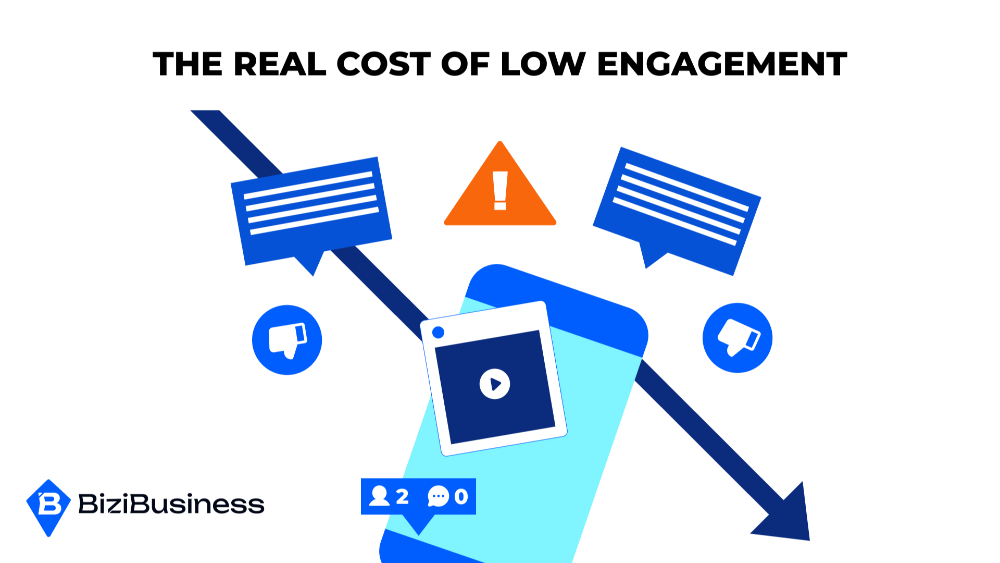
Most brands treat low engagement like a creative problem. “Maybe we just need better design.” Or, “Let’s try a new caption style.”
But here’s the truth: poor engagement isn’t just a content issue — it’s a performance drag on your entire marketing engine.
Algorithm Suppression: Fewer Reactions = Less Reach
Social platforms are brutal in 2025. If your content doesn’t get early interaction — within the first 30–60 minutes — the algorithm assumes it’s irrelevant and buries it. That means every post with low likes or zero comments teaches the platform to show your content less.
And it’s a downward spiral. Less engagement → lower reach → fewer eyeballs → even lower engagement.
Wasted Ad Spend: Boosting Dead Content Burns Budget
Boosting posts without real organic traction is one of the fastest ways to light your ad dollars on fire.
Why? Because you’re amplifying a message your audience already ignored.
Even worse, most boosted posts don’t lead anywhere — no conversion path, no funnel, just impressions. When engagement is weak, your cost-per-click skyrockets, and your return on ad spend (ROAS) drops into the red.
Brand Erosion: No Buzz = No Trust
In a digital world, attention is currency — and silence sends a message.
If your posts get zero conversation, no shares, and no visible social proof, potential customers subconsciously register your brand as irrelevant or untrusted. This creates credibility, especially for high-ticket or service-based businesses where trust drives conversions.
Top 5 Reasons No One’s Engaging
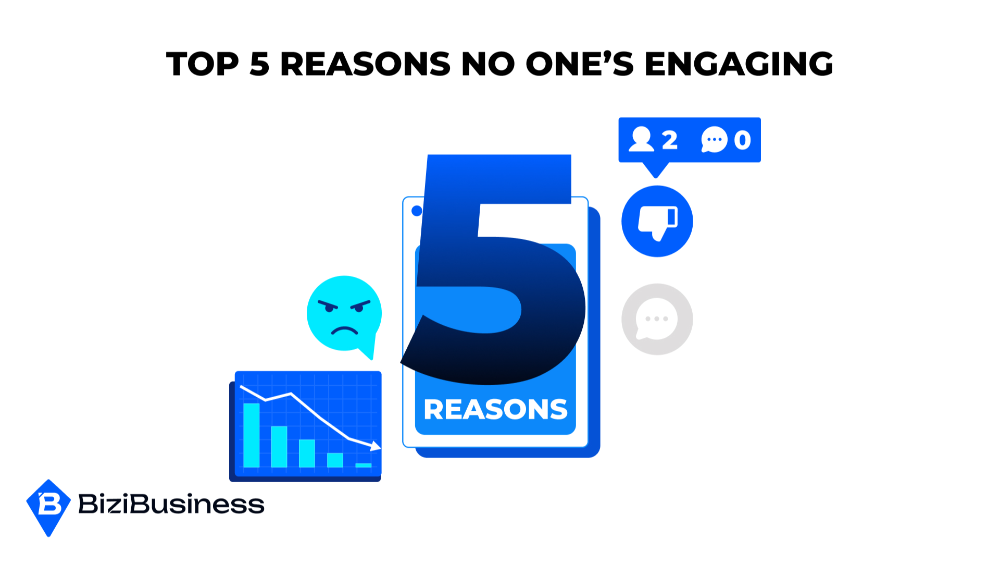
Before you panic about your product or question your brand voice, understand this: the problem isn’t usually what you’re offering — it’s how you’re communicating.
Here are the five silent killers of engagement we see most often:
1. You’re Talking At Them, Not With Them
One-directional content is everywhere. Brands shou`qt their message into the void and wonder why no one’s responding. The fix? Shift from broadcasting to inviting. Ask questions. Share stories. Open loops that make your audience want to weigh in.
Engagement doesn’t happen when you speak louder — it happens when you listen better.
2. Your Content Isn’t Native to the Platform
What performs on LinkedIn likely won’t land on TikTok. What crushes on Instagram Stories might flop on Facebook. If your format, tone, or timing is off, the algorithm won’t prioritize you — and your audience won’t connect.
3. Inconsistent Presence = Forgettable Brand
Posting three times one week and disappearing the next? That kills momentum. Social media platforms favors consistency — not just in content volume, but in voice and message.
If people don’t know when or how you show up, they won’t know why they should care.
4. No Clear Call to Action
So many posts end with… nothing. No prompt, no question, no direction.
And if you’re not inviting your audience to engage — why would they?
The most effective content doesn’t demand attention — it guides interaction. A well-placed “What do you think?” or “Save this for later” can completely change your comment rate and save count.
5. You’re Optimizing for Vanity, Not Connection
Chasing views and likes over conversation and saves leads to shallow engagement. Yes, high numbers look good, but they rarely mean anything without follow-through.
The goal isn’t applause. It’s alignment — between your message, your format, and your ideal audience’s mindset.
Engagement-Boosting Strategies That Work in 2025
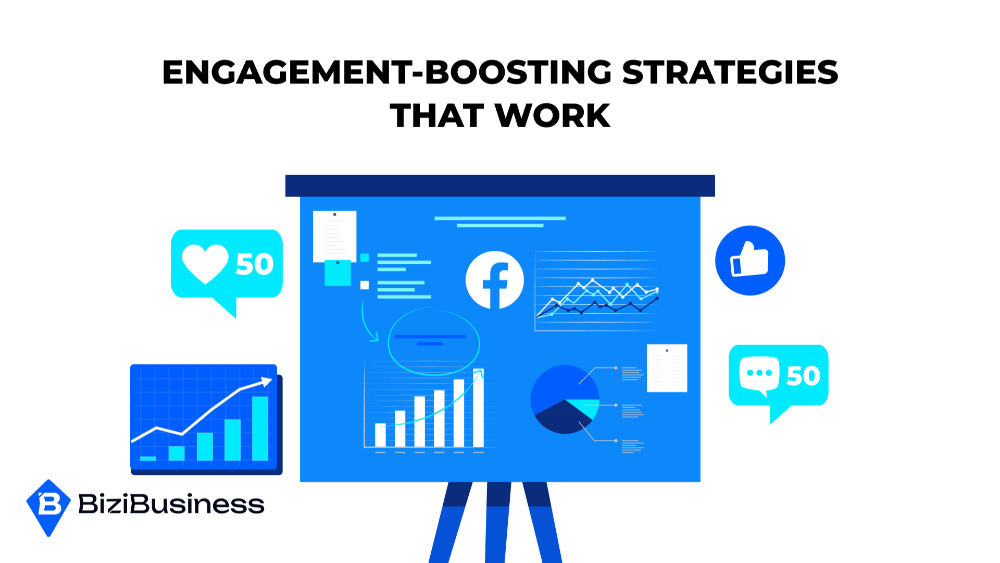
Let’s be clear: boosting engagement doesn’t mean chasing cheap tricks or gaming the algorithm. It means building authentic, two-way conversations — the kind that convert followers into prospects, and prospects into loyal clients.
These are the strategies BiziBusiness uses to help brands drive meaningful interaction at scale — and they work, consistently.
Use Interactive Features to Start Micro-Conversations
Engagement doesn’t always have to be a comment or a share. Sometimes, a tap is enough to open the door.
On Instagram, polls, sliders, and quizzes in Stories drive quick interaction. On LinkedIn, reaction-based questions (e.g., “Agree or disagree?”) create low-friction engagement. Even TikTok’s Q&A stickers and comment replies can turn viewers into participants.
Think of these tools as conversation starters — not just features.
Nail Platform-Specific Voice and Format
Every platform speaks a different language. TikTok favors short, raw, punchy storytelling. LinkedIn thrives on structured insights and lived experiences. Instagram wants visual flow and fast motion. X wants wit and brevity.
Success comes from sounding native, not just showing up.
Your job is to adapt your message without diluting your voice.
Caption Like a Conversation, Not a Billboard
Your captions shouldn’t just explain — they should engage.
Instead of stating “We offer X service,” try “Have you ever struggled with [problem]? Here’s how we helped a client fix it.” Add a follow-up question like: “What’s been your biggest challenge with this?”
Prompting response gives your audience a reason to interact — and makes the content creation feel less like a monologue, more like a dialogue.
Post When Your Audience is Active, Not Just Available
Timing still matters — but what matters more is understanding your audience’s rhythm.
Use data from Instagram Insights, LinkedIn analytics and metrics, or scheduling tools like Metricool to see when your followers engage. Then test posting in that window, consistently.
Embrace Short-Form Video and Carousels for Retention
These two formats dominate for a reason: they’re easy to consume and hard to ignore.
- Short-form video (Reels, TikToks, Shorts) catches attention with quick storytelling.
- Carousel posts keep people swiping — which signals retention to the algorithm and boosts reach.
And both formats allow you to break down complex ideas into digestible, shareable moments.
Real-World Wins: Engagement Strategies That Drove Results
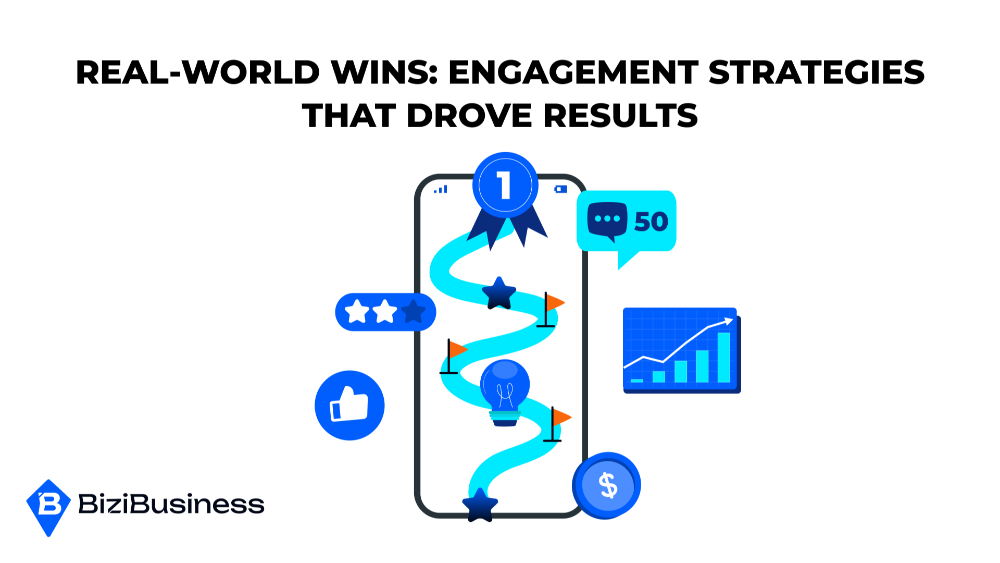
Theory is great — but results are better. Below are real (and realistic) examples showing how brands flipped the engagement switch using a few simple changes.
Whether you’re a solo consultant or a growing multi-location business, these shifts can apply to you today.
Before: Crickets on Every Post
A local dental practice was posting clean, branded content like patient selfies and appointment reminders, but every post got only a handful of likes and zero leads. This is a common pitfall that a strategic influencer marketing campaign could have fixed, by leveraging trusted voices to drive genuine engagement.
After: Engagement Strategy Applied
We introduced a weekly “Myth vs. Truth” carousel series around common dental misconceptions — with question prompts at the end.
We also replaced their generic captions with real stories from patient journeys and added IG Story polls asking followers what they feared most about dental visits.
Result:
- Engagement rate rose by 147% in 30 days
- Story views doubled
- Three new patients specifically referenced the carousel content when booking
Before: High Views, No Conversations
A fractional COO was posting insightful LinkedIn articles but getting little to no interaction.
After: Comment-First Framework
We restructured the posts as punchy POV takes, breaking them into 5–6 sentence carousels or thought-leader text posts with questions like, “Do you agree?” or “What would you have done?”
Result:
- Engagement tripled
- 12 inbound DMs asking for consultations
- One post alone generated $9K in new client revenue
Before: Boosted Video That Burned Budget
A SaaS founder was spending $300/month boosting Reels with no defined CTA and poor video retention.
After: Hook-Driven Short-Form with CTA
We rebuilt their content calendar with a focus on storytelling hooks (“Here’s what we got wrong in our first year…”) and added native CTAs at the end of each video (“DM ‘audit’ for the full checklist”).
Result:
- Watch time increased 3x
- DM volume grew by 40%
- Boosted spend now converts at a 4x higher ROAS
These aren’t flukes — they’re proof that with the right strategy, engagement becomes a lever, not a lottery.
How to Shift From Posting to Performing
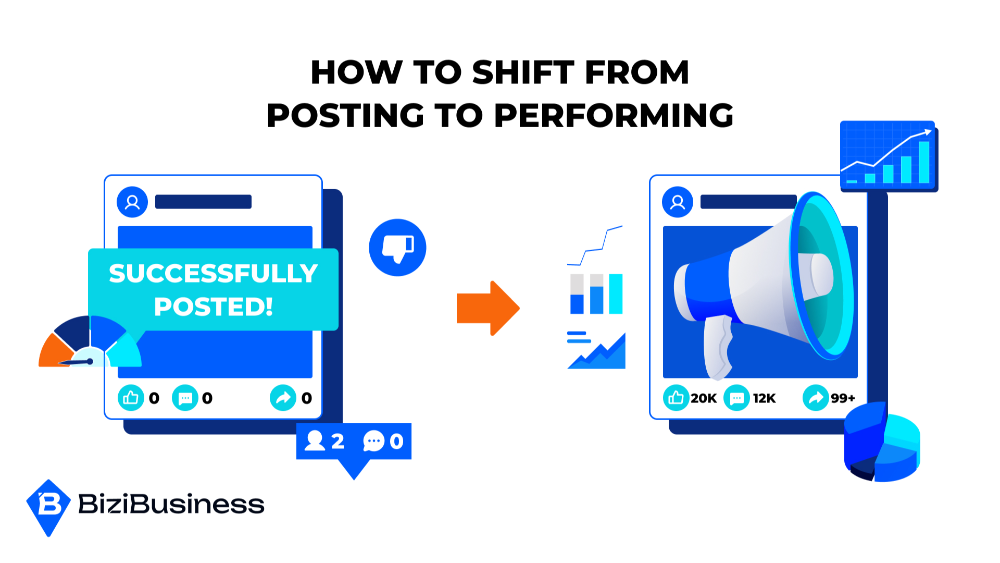
Posting for the sake of “being active” is what most brands do. Performing? That’s what separates the ones who grow from the ones who plateau.
Here’s how to build a strategy that doesn’t just show up — it pulls your audience in and moves them to action.
Turn Passive Posts Into Engagement Engines
Stop thinking of content as a one-and-done. Every post should be a door — an entry point to a conversation, a funnel, or a deeper relationship.
How? Give your audience something to do:
- Ask a real question
- Prompt them to share their experience
- Use “double-tap if…” or “drop an emoji if…” to lower the barrier
When someone engages, they’re raising their hand — treat that as the beginning of something, not the end.
Build a Feedback Loop
This is where most brands drop the ball. A comment comes in… and it gets ignored. A DM shows interest… and gets a canned reply.
Don’t just collect interaction. Respond in a way that keeps the loop going.
- When someone comments: ask a follow-up question
- When someone DMs: offer value or guide them to a next step
- When a post performs well: make a sequel, reshare it, or pin it
BiziBusiness teaches clients to build micro-funnels inside their DMs and comments — it turns interaction into momentum, fast.
Create Content That Invites, Not Demands
Nobody wants to be pitched all day.
Instead of selling with urgency, lead with curiosity. Show them how their problems show up. Share how others solved them. Then invite them to explore further — whether through a link, a DM, or a save for later.
When you stop trying to “convert” and start trying to “connect,” performance improves naturally. Algorithms notice. People remember.
Why Engagement Must Be Your Priority

If you take nothing else from this guide, remember this:
Social media tools without engagement is just digital noise.
You can have the best-designed posts, the sharpest branding, even a decent following — but if no one’s interacting, your message isn’t landing. And if your message isn’t landing, your marketing isn’t working.
Here’s the hard truth: platforms are built to reward interaction. The more people engage, the more reach you get. The more reach, the more awareness. The more awareness, the more conversion opportunities.
But if no one reacts, the algorithm pulls back, your visibility drops, and you quietly fade into obscurity — not because your offer’s weak, but because your audience never had a reason to care.
Low engagement isn’t a creative issue. It’s a business risk.
Brands that adapt — those that shift from content that speaks at people to content that includes people — are the ones dominating feeds, building loyalty, and scaling revenue.
Subscribe to Newsletter
Unlock your creativity and stay up to date on marketing tips
